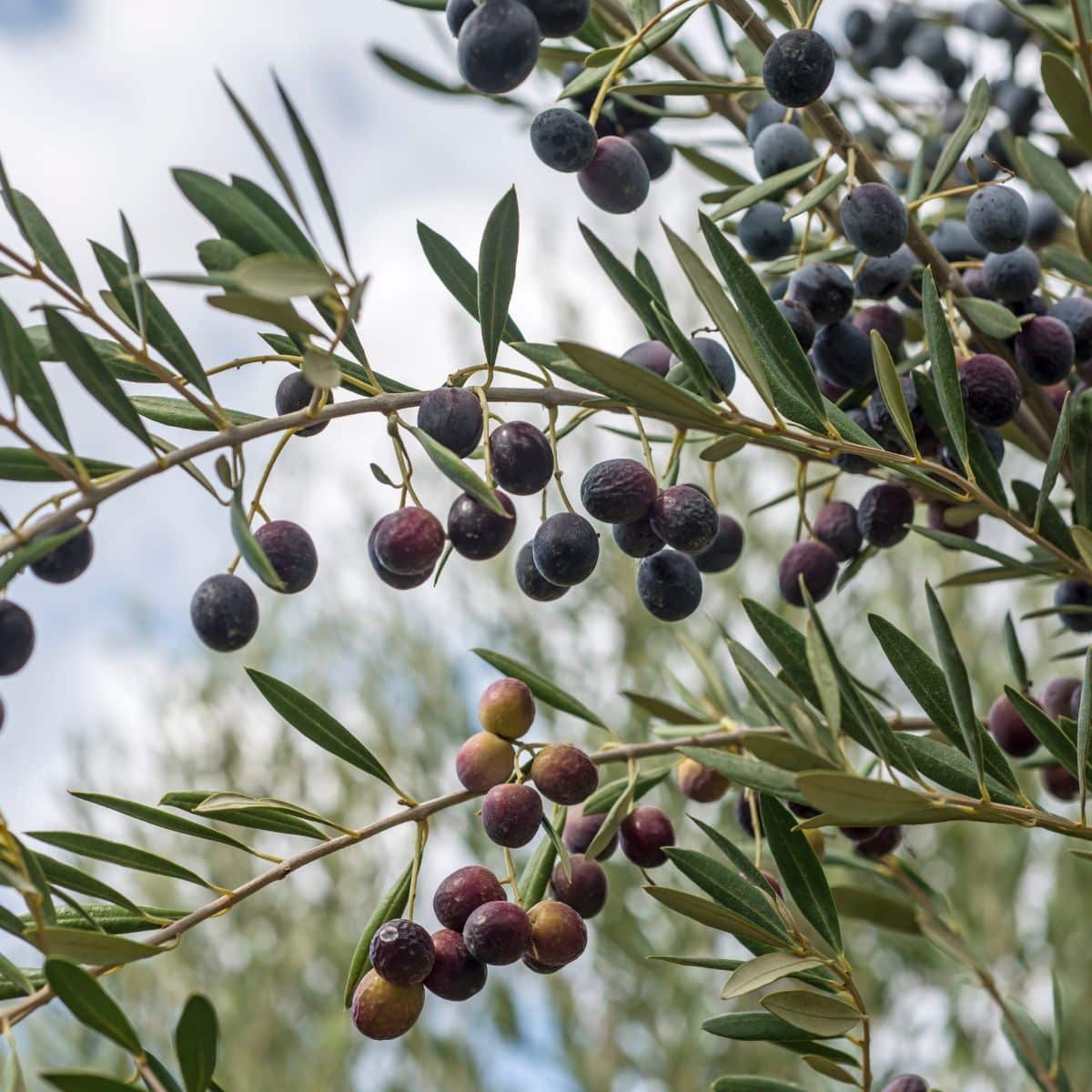With so many delicious black olives and green olives available today, here's what you need to know about choosing the right olive for what you need. Each olive variety has its own taste and texture, resulting in a unique flavor and tasting notes.

Jump to:
About Olives
Cultivated for over 6,000 years, olive trees find their origins in the Mediterranean, which still contributes to over 90% of the world's olive production. Thriving exclusively in hot, dry climates with mild winters, these trees take 12 to 15 years to bear full crops and can live up to an impressive 600 years.
Specialty markets offer table olives from various regions, including Greece, Spain, Italy, France, Israel, Morocco, and newer entries from Californian olive groves.
Despite their fruit-like appearance, olives are botanically classified as drupes, akin to cherries and peaches, featuring fleshy pulp, a single seed or pit, and an inner stone containing the seed.

Olive Ripeness
Ripening from green to black, olives progress through stages of reddish, brown, and purple hues. Green and black olives may not necessarily be distinct varieties, as they are harvested and cured for the table at various ripeness stages.
Straight from the tree, olives are inedible due to the bitter compound oleuropein; thus, they require curing before consumption.
The flavor of olives, influenced by factors like ripeness, climate, and handling, primarily hinges on the curing method. Brining or dry-curing are the two predominant methods, each contributing distinct characteristics to the finished product.
Olive flavors span a broad spectrum, appearing in various colors and sizes, reflecting the variety and harvest-cure timeline. They may range from strong to mild, salty to vegetal, buttery to nutty, and spicy to slightly bitter.
Buying Olives
When purchasing olives, look for unbruised, clean, and firm ones. Brine-cured olives should be plump with smooth, shiny skins, while dry-cured olives should appear meaty and not overly dry.
To preserve olives, store them in the refrigerator, keeping them moist either in brine or sprinkled with olive oil. Allow them to reach room temperature before serving, and if brine-packed, drain and rinse before consumption.

Cooking with Olives
When cooking with olives, reduce the recipe's salt content, as olives contribute their own salty flavors. Olives contain 5 to 20 calories each, with a high proportion of healthy mono- and polyunsaturated fats.
Among the diverse olive varieties, Lucques are French table olives known for their elegant oval shape and tender flesh, offering a mild and buttery taste.
Types of Green and Black Olives
Kalamata olives, named after their geographic region, are excellent for both eating and cooking, featuring a wonderfully intense yet not overly strong flavor. Medium-size with thick flesh, kalamatas have a wonderfully intense but not overly strong flavor. Picked ripe, kalamatas are slit, brine-cured, and then packed in vinegar. Easy to pit, they're delicious in Greek salads with feta cheese, fresh tomatoes, and cucumbers.
Nicoise olives, are a French favorite, produced in the region around the French Riviera. They have a sharp, somewhat sour taste and often come packed with herbs. A classic component of salade nicoise, pitted, minced nicoise olives make a fine, full-flavored tapenade spread, too.
Picholine olives are brine-cured French olives with crunchy flesh and a salty-sweet flavor; they're delicious with before-dinner drinks. In the U.S., picholines are sometimes packed with citric acid to preserve their color.
Manzanilla olives are pale green to green-brown olives from Spain; they're theclassic accompaniment to a glass of dry sherry, as is the custom in southern Spain. Manzanillas have crisp flesh with an oily texture and slightly smoky, rich flavor.
Lucques are French table olives with an elegant oval shape and tender flesh. Lucques are mild a nd buttery; they're particularly good served with a peritifs and a dish of salted nuts.
Castelvetrano olives, originating from Sicily, Italy, are renowned for their vibrant green hue, firm texture, and distinct, sweet taste. These olives, often referred to as "Dolce di Nera," are harvested at the early stage of ripeness, contributing to their unique color and mild, fruity flavor. With a pleasing balance of sweetness and brininess, Castelvetrano olives have gained popularity for their exceptional taste, making them a sought-after delicacy in Mediterranean cuisine and beyond.
Dry-cured olives (also called oil-cured or salt-cured), are mostly produced in Greece and northern Africa, especially Morocco. They have a meaty texture a nd a slightly bitter, smoky flavor that lingers on the tongue. Oil-cured olives are easy to pit because of their moist, pliable flesh. Greek oil-cured olives tend to be milder, while French oil-cured olives have an almost whiskey-like flavor.
Cracked Provencal olives are brine-cured and then cracked, packed, and marinated with herbes de Provence and olive oil. Great for hors d'oeuvres, cracked Provencals have firm flesh and a deliciously mild, herbal flavor.
Sicilian olives are large, brownish-green brine-cured olives with soft-textured and somewhat tart but mild flesh. In the U.S., "Sicilian-style" olives are produced in California and are often offered cracked or occasionally packed with chile peppers and olive oil added to their finished brine.
Bella di Cerlgnola olives are from southern Italy along the Adriatic coast. These bright green giants have mild, sweet, dense flesh that clings to the pit. Cerignolas' beautiful color makes them a standout for snacking or serving with drinks; they're a good choice for those who don't like strong-flavored olives. Black, ripened Cerignola olives are even milder in flavor than green ones.

Sign-up for The Flavor Journal Newsletter and Get a Free e-book!

Let's connect!
Be sure to FOLLOW US on FACEBOOK, INSTAGRAM, TIKTOK, and PINTEREST Many thanks!




Leave a Comment